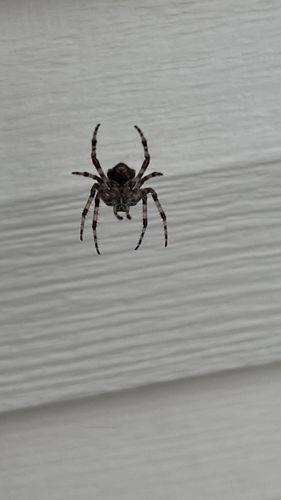Orb Weaver Spider (likely Araneus diadematus or a similar species due to markings)
Scientific Name: Likely Araneus diadematus or a closely related species within the Araneidae family (exact species identification is difficult from this image alone)
Order & Family: Araneae (Order), Araneidae (Family)
Size: Female body length typically 6-20 mm (0.24-0.79 inches); males are smaller, around 5-10 mm (0.20-0.39 inches).

Natural Habitat
Found in a variety of habitats, including gardens, forests, fields, and around human dwellings. They require places to anchor their webs, such as between trees, shrubs, or on structures like houses and fences.
Diet & Feeding
Strictly carnivorous, feeding primarily on flying insects caught in their orb webs, such as flies, moths, mosquitoes, and sometimes small beetles.
Behavior Patterns
Orb weavers are nocturnal, often building or repairing their webs at night and resting during the day. They are solitary and territorial, defending their webs from other spiders. When an insect is caught in the web, the spider will quickly wrap it in silk before delivering a venomous bite.
Risks & Benefits
Potential Risks: Orb weavers are generally harmless to humans. Their bite is not considered medically significant and usually results in mild, localized pain, redness, or swelling, similar to a bee sting. They are not aggressive and will only bite if provoked or accidentally trapped against the skin. Potential Benefits: They are beneficial natural pest controllers, helping to reduce populations of unwanted insects. Their webs can be quite beautiful, especially when adorned with dew.
Identified on: 8/16/2025